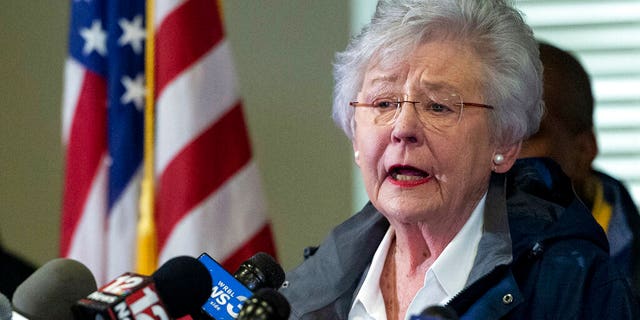Get all the latest news on coronavirus and more delivered daily to your inbox. Sign up here.
As most states move to at least partially reopen their economies and lift orders requiring people to stay at home to slow the spread of the coronavirus, they are sending mixed messages on whether or not the controversial restrictions could be fully or partially re-implemented if there is another increase of cases.
Social distancing measures and stay-at-home orders aimed at slowing the coronavirus’ spread are meant to decrease the number of people sick at any given time, thus preventing hospitals from being overwhelmed and not being able to give adequate care to all of their patients inflicted with the disease.
Outside of a few hotspots, that goal has largely been accomplished in the U.S. And states, seemingly confident that their hospitals are safe, have begun slowly lifting their lockdown orders which kept kids home from school, adults away from work and most public gathering places closed down.
But medical experts have warned that just because coronavirus cases begin decreasing does not mean they cannot spike again — either in the immediate aftermath of the lifting of states’ restrictions or later this year as the weather cools, potentially making it easier for the virus to be transmitted between people as happens with the seasonal flu.
CORONAVIRUS: WHAT YOU NEED TO KNOW
CORONAVIRUS IS ‘JUST THE TIP OF THE ICEBERG,’ SAYS CHINA’S TOP BAT RESEARCHER
President Trump, for his part, has made clear he opposes any return to stay-at-home orders or re-closures of businesses.
“People say that’s a very distinct possibility,” Trump said when asked a possible second wave of infections last week. “It’s standard. And, we’re going put out the fires. We’re not going to close the country.”
States’ reopening plans differ significantly on the level of consideration they give such a possibility, and how they would deal with the problem.
Maryland and Pennsylvania, for example, specifically address the chance of a spike in cases as their coronavirus restrictions are lifted, but diverge in how much they detail a potential response.
Maryland’s plan identifies three “stop signs” that could force “the easing to slow, stop, or even be reversed.” Those include an uptick in hospitalizations or cases taking up resources at hospitals, [i]ndications that Marylanders are disregarding social distancing guidelines,” and outbreaks significant enough that contact tracing cannot keep up with the spread.
Pennsylvania has plans for “robust surveillance” that will allow the state to “determine if changes in the reopening and the easing of the restriction process must take place.” It does not define this specifically, however, beyond detailing how it will isolate and quarantine cases of the virus to “stamp out” the spread of the disease.
Alabama Gov. Kay Ivey, on the other hand, has indicated she has does not intend to return the state’s previous strict disease-mitigation measures, saying the state would “live with” the coronavirus just as it has for “the flu and other viruses for which there is no known cure,” according to the Montgomery Advertiser.
“Our numbers are not as good as we would hope,” Ivey at a news conference on the easing of her state’s restrictions last week, according to AL.com. “But we cannot sustain a delayed way of life as we search for a vaccine. It’s not realistic to believe we’re going to keep everyone totally isolated from each other.”
Neither Alabama’s new coronavirus executive order nor its accompanying fact sheets address the potential for another wave of infections or measures the state might take if that possibility materializes.

FILE – In this March 4, 2019, file photo, Alabama Gov. Kay Ivey speaks at a news conference in Beauregard, Ala. (AP Photo/Vasha Hunt, File)
WHITE HOUSE BARS ENTRY OF NON-US CITIZENS TRAVELING FROM BRAZIL, CITING CORONAVIRUS CONCERNS
Meanwhile, Michigan Democratic Gov. Gretchen Whitmer has kept most of her state’s strict regulations in place in an effort to stomp out the disease before any second wave can materialize.
“If we’re going to lower the chance of a second wave and continue to protect our neighbors and loved ones from the spread of this virus, we must continue to do our part by staying safer at home,” she said last week as she extended Michigan’s stay-at-home order to June 12.
And New York has a more than 150-page set of reopening guidelines that makes clear if experts see concerning trends, they can stop or reverse the reopening efforts, which are already significantly underway upstate despite how hard the disease has hit the more dense New York City area.
“Each region must appoint an oversight institution as its ‘control room’ to monitor the regional infection rate during the phased reopening. This team of local elected officials, as well as hospital and state representatives, will monitor the above metrics and other key indicators, and can slow or shut off reopening if indicators are problematic,” the guidelines read.
They continue: “The State’s public dashboard will allow regions and the public to see where regions are in meeting the metrics, and if certain areas are slipping and in need of additional actions to control the virus and protect the public’s health – a ‘circuit breaker.'”
Virginia has a detailed plan for how it will proceed with its reopening but doesn’t identify any benchmarks that could cause the state to pull back the reigns, or what officials or institutions would be responsible for making that call.
PURDUE UNIVERSITY PRESIDENT SAYS NOT REOPENING IN THE FALL WOULD BE ‘UNACCEPTABLE’
The different approaches states are taking as they navigate the unprecedented health and economic crisis that’s been thrust upon them in the first half of this year come as the World Health Organization (WHO) warned Monday that an “immediate second peak” in coronavirus cases could face nations that relax their controls on the disease’s spread too soon.
“When we speak about a second wave classically what we often mean is there will be a first wave of the disease by itself, and then it recurs months later. And that may be a reality for many countries in a number of months’ time,” WHO emergencies director Dr. Mike Ryan said, according to Reuters. “But we need also to be cognizant of the fact that the disease can jump up at any time”
“We cannot make assumptions that just because the disease is on the way down now it is going to keep going down,” Ryan continued, warning that nations should “continue to put in place the public health and social measures… [so] we don’t have an immediate second peak.”
U.S. National Institute for Allergy and Infectious Diseases Director Dr. Anthony Fauci has also warned about the potential for further outbreaks that could result from a false start by states or localities lifting their coronavirus restrictions.
CLICK HERE TO GET THE FOX NEWS APP
“If some areas – cities states or what have you – jump over those barriers, checkpoints and prematurely open up without having the capability of being able to respond effectively, and efficiently, my concern is that we will start to see little spikes that might turn into outbreaks,” he said in a Senate hearing earlier this month.
Fauci in the hearing boosted a set of guidelines the White House has released for states and localities to begin opening their economies. In order to proceed to the first of three stages, states would need to see an uninterrupted decrease in coronavirus cases over a 14-day period, but not all states that are moving to reopen have seen such a decrease.
Fauci, in the hearing on how to safely and quickly reopen the U.S. economy, warned that states jumping the gun could lead to preventable “suffering and death” and “turn the clock back” on reopening goals “instead of going forward.”
Fox News’ Andrew O’Reilly contributed to this report.







